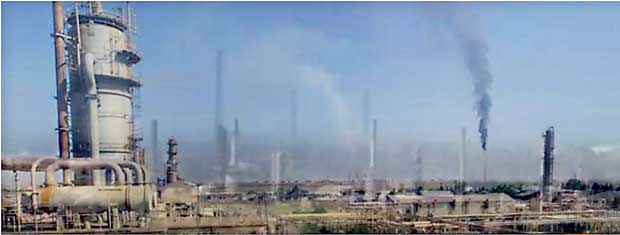05 Apr 2017 - {{hitsCtrl.values.hits}}

(c) 2017, Bloomberg · Sam Wilkin · BUSINESS, WORLD, MIDDLE-EAST · Apr 03, 2017 -
A territorial dispute in northern Iraq threatens to disrupt oil output at a field containing as much crude as Norway, even as U.S.-backed forces prepare what could be a decisive blow against Islamic State militants in the nearby city of Mosul. Kirkuk, where Iraq first discovered oil in 1927, can produce more than 1 million barrels a day but is pumping at less than half its capacity while competing ethnic and political groups scramble to control its 9 billion barrels of reserves.
1. What’s behind the tensions in Kirkuk?
Lying near a disputed city of the same name, the Kirkuk field is a tinderbox for potential conflict between the central government and Iraq’s semi-autonomous Kurds, both of whom have for decades claimed it as their own. More recently, it also became became a flashpoint for rival Kurdish political parties and their heavily armed supporters. “As Islamic State becomes less of a pressing threat, a lot of these tensions that had been subsumed into the common fight are inevitably going to come back to the surface,” says Richard Mallinson, an analyst at consultant Energy Aspects. 2. Who controls the Kirkuk field?
Iraq’s central government and the Kurdistan Regional Government both pump oil from different wells at the field, which straddles their respective areas of control. Kurdish forces took control of territory around Kirkuk in June 2014 after the Iraqi army fled from Islamic State militants, but the federal government in Baghdad doesn’t recognize Kurdish control of the area. The Patriotic Union of Kurdistan party, which leads Kirkuk’s local government and maintains the city’s security, is a rival to the Kurdistan Democratic Party that dominates the KRG and controls most of its oil revenues.
3. How much oil is Kirkuk producing?
Kirkuk and nearby fields are producing about half a million barrels of oil daily, according to data supplied by the Oil Ministry and the KRG in September 2016. Most of the crude is exported through a Kurdish-controlled pipeline to the Turkish port of Ceyhan. The KRG produces about 350,000 barrels a day, and the state-run North Oil Co. approximately 150,000. The two sides reached a deal in August 2016 allowing North Oil to export through the Kurdish pipeline. In return, the KRG takes a cut of the revenue and gets to export its own share of crude from Kirkuk. Iraq, the second-biggest OPEC member, pumped a total of 4.44 million barrels a day in February, data compiled by Bloomberg show. Oil prices fell more than 2 percent after the agreement as it was expected to increase exports by about 150,000 barrels.
4. Why is the deal at risk?
The export deal doesn’t address the competing claims to Kirkuk’s oil, or the larger dispute over the KRG’s right to produce and export oil independently of the central government. The deal also left out Kirkuk’s PUK-led provincial government, stoking tensions between the two main Kurdish parties. On March 2, soldiers loyal to the PUK stormed North Oil’s main pumping facility at Kirkuk and briefly halted exports of more than 100,000 barrels a day. They threatened to cut off those exports permanently unless Iraq’s Oil Ministry agreed to share revenue from crude pumped there and to develop local energy projects.
5. Why the chilly relations between the two Kurdish parties?
The KDP and PUK are uneasy coalition partners in the KRG, having fought a civil war with each other in the 1990s.
contd. on page 21
17 Nov 2024 2 hours ago
17 Nov 2024 3 hours ago
17 Nov 2024 3 hours ago
17 Nov 2024 3 hours ago
17 Nov 2024 6 hours ago